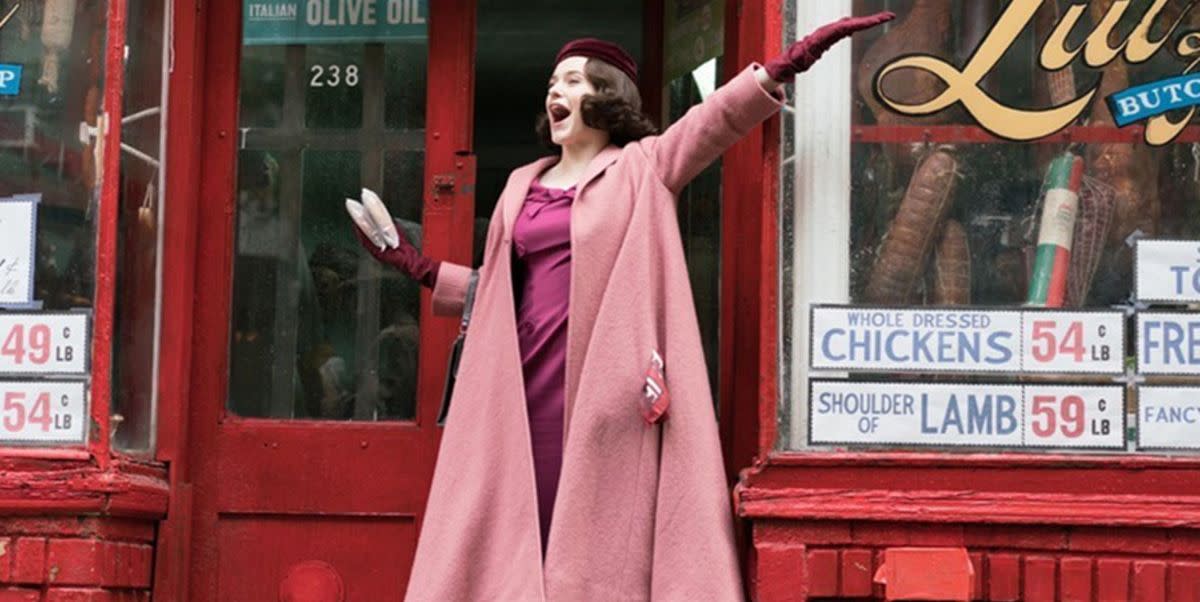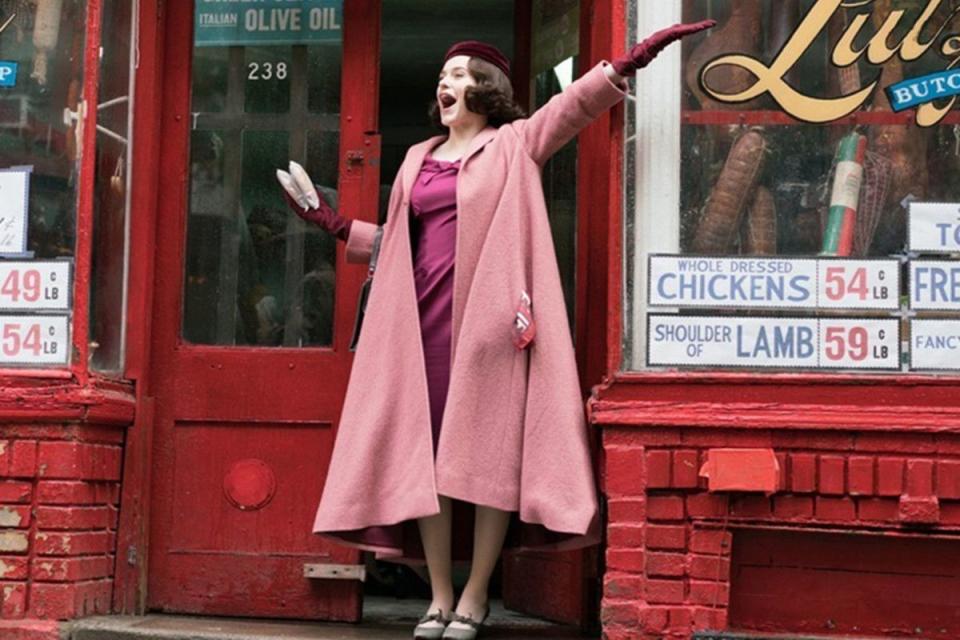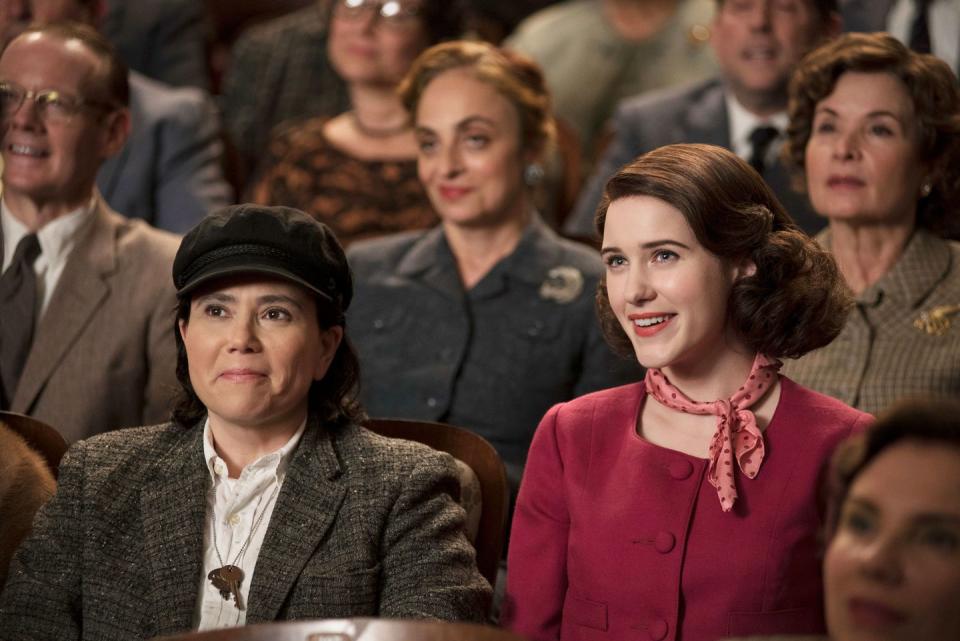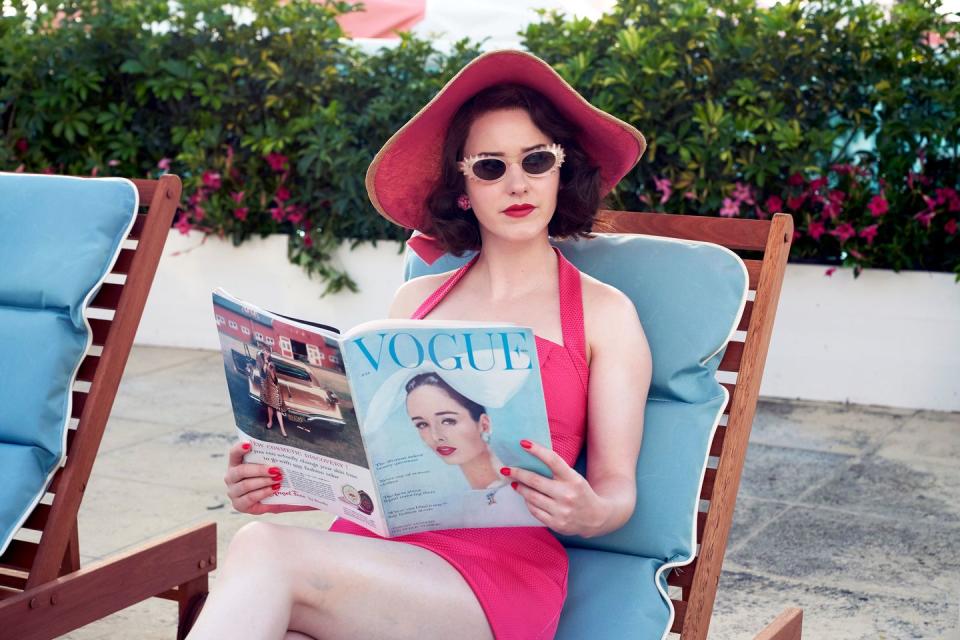The Secret Meaning Of The Color Pink In 'Marvelous Mrs. Maisel'

Stepping into the world of Marvelous Mrs. Maisel is less like putting on rose-colored glasses (much too "pastel-y" for show creator Amy Sherman-Palladino’s taste and Midge Maisel’s vivid character) and more like putting on a magenta pair of cat-eye sunnies—bedazzled ones, of course. The color pink—as hot as a mid-century summer in the Catskills—became a trademark of the hit TV show since the second Midge (played by Rachel Brosnahan) yelled, "We got the rabbi!" in that coat.
But pink isn't just the color that bombarded (how else can you describe it?) viewers in the first episode and was later replicated in dozens of Halloween costumes. It’s almost as much a character as Midge herself. "Pink was obviously her signature," Sherman-Palladino tells Women's Health. "...We hit a lot of things with that pink coat—that pink coat meant a lot."

It meant so much, in fact, that Marvelous Mrs. Maisel's costume designer, Donna Zakowska, has developed "a whole philosophy about the color pink," according to Sherman-Palladino. "To this day, [it's] one of the most fascinating conversations I've ever had," she says. The gist? The baby pink shade of Midge's coat was "her pink when she was in the dark about what her real life was gonna be," explains Sherman-Palladino. She was happy with Joel, she adds, but, well, you know what they say about ignorance and bliss.
"Then, once the Joel thing happened"—you know, revealing that he'd been cheating on her with his secretary and moving out in the same night—"she [Donna] retired that pink," Sherman-Palladino says. "...And then, at some point, she came to us and said, "I'm bringing the pink back. It's not going to be that pink; it's gonna be a different pink because it's the post-Joel pink."

"There were a lot of conversations about pink," she adds in a slightly reminiscent, slightly exasperated tone. "But it's all about the character and their strength and what a certain color meant at a certain time versus a certain color that's brought in later." Nothing in Zakowska's costuming happens on accident, Sherman-Palladino asserts: Every color choice is made "in terms of character" and "to support whatever emotion is going on in the scene."
The baby pink was, fittingly, a sign of Midge's naiveté about her marriage, yes, but more importantly her own—pardon the schmaltz—marvelousness. (Because, really, who else could land a full stand-up set that's been translated line by line into French and then go on to save a routine about their father having sex from a blitzkrieg-level bombing after seeing aforementioned father in the audience? Who does that? The Marvelous Mrs. Maisel does.)
But the post-Joel pink—bolder, brighter, even better to bombard your eyeballs—embodies Midge's courage to take on the whole damn world, "tits up."

"One thing that Maisel never wanted to do is shy away from the fact that we are definitely a very strong-woman show. Our two leads are chicks." says Sherman-Palladino. "We're not just a woman show though. So we don't want to have a soft, pastel-y sort of 'Calgon, take me away!' sort of feel." (In true ASP fashion, this is an arguably obscure reference to a ridiculous 1980s bath soap commercial.)
"We wanted it to sort of be poppy. And, you know, hot pink and black—those were color combinations that were used back then. People didn't shy away from pink in the '50s the way they might today with a pale, wispy, pastel-y sort of feeling." Millennial pink who?
You Might Also Like

